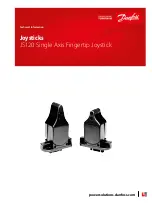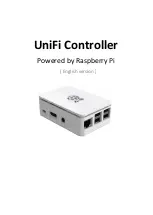
Unique Register Explanations
Setpoint Ramp Using Automatic Setpoint Ramping Register: K
The controller’s Setpoint Ramp parameter provides a controlled ramp when
the setpoint value is changed. (The Setpoint Ramp value can be changed by
using VK command.) When the setpoint value is changed, the controller begins
to ramp from the existing value to the new target setpoint, at a rate set by this
register. A value of zero in the Setpoint Ramp register disables ramping.
During the controlled ramp phase, the Integral Action is automatically
disabled. This tends to reduce overshoot due to excessive integral build-up. The
Integral Action automatically resumes at the end of the controlled ramp phase.
To terminate a ramp in progress, write 0 (zero) to the Setpoint Ramp
register. This results in immediate control to the target setpoint.
Setpoint Ramp Using Periodic Setpoint Write Register: B
A host computer can command the setpoint value of the controller by
writing new setpoint values based on clock ticks. In this manner, the host has
explicit control over setpoint values, ramp and hold phases.
During ramp phases, the Integral Action may lead to overshoot problems.
In this case, the integral action may be slowed or completely disabled by
setting the integral time register.
Periodic Setpoint Write Commands (E
2
PROM precautions)
In the case of periodically writing setpoint values to the controller (host is
running a temperature/process profile), terminate the write command with
the “$” terminator character. This instructs the controller to accept the
setpoint value, but not to write the value to E
2
PROM memory. This eliminates
cycling of the internal memory chip, which has a finite life-cycle rating (1
million typical). This rating should not be exceeded.
After power loss, the setpoint value written will be lost when using “$”.
Termination of the setpoint write command with the “*” character instructs
the controller to save the value to E
2
PROM memory. In this case, the setpoint
value will be recalled after a power loss.
Output Status: W
The Output Status register indicates the present status of the controller’s
discrete alarm outputs (coils). This is a read only register. The controller
responds with OST followed by a field consisting of 4 bytes. The bytes
represent the status of the outputs in the following order: main output O1,
cooling/ secondary output (O2), alarm 2 output (A2), alarm 1 output (A1).
When the output is on, the corresponding byte is “1.” When the output is off,
the corresponding byte is “0”.
Communication Format
Data is transferred from the controller over a serial communication
channel. In serial communications, the voltage is switched between a high
and low level at a predetermined rate (baud rate) using ASCII encoding. The
receiving device reads the voltage levels at the same intervals and then
converts the number back to a character.
The table lists the required voltage levels at the receiver for RS485
interface.
Logic
RS485
Interface State
1
a-b <-200 mV
mark (idle)
0
a-b >+200 mV
space (active)
Data is transmitted one byte at a time. Each ASCII character is “framed”
with a beginning start bit, an optional error detection parity bit and one or
more ending stop bits.
-61-
Содержание CN63100 Series
Страница 23: ...FRONT PANEL PROGRAMMING CHART FOR CN63100 CN63300 CONTROLLERS 15 ...
Страница 48: ... 40 ...
Страница 62: ...PID Adjustments Cont d 54 Figure 33 Process Response Extremes ...
Страница 88: ... 80 ...
Страница 89: ... 81 ...
Страница 90: ... 82 ...
















































